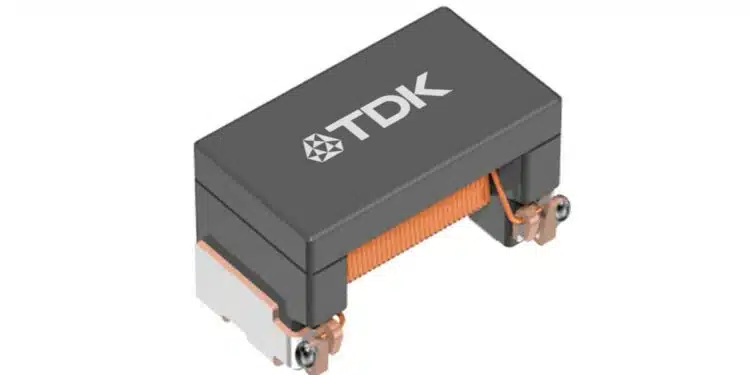TDK launches wide frequency range wirewound inductors for automotive POC power-over-coax applications.
TDK Corporation has expanded its ADL4524VL series (4.5 x 2.4 x 2.6 mm – L x W x H) of wirewound inductors for automotive power-over-coax (PoC). Mass production of these components began in July 2025.
With automotive PoC technology, a single coaxial cable can simultaneously carry both power and data. PoC is widely used in automotive camera systems as ADAS for safe driving has become more widespread.
Using a single coaxial cable for power and signal lowers the vehicle’s weight by reducing cabling, which in turn helps to improve fuel and power consumption. Simplified cabling within the vehicle also allows for a more effective use of the space.
The PoC system requires a filter incorporating multiple inductors to separate power from the data signal before processing effectively. This product enables high impedance at a wide frequency range from 10 MHz to 1 GHz with its proprietary materials and structural design innovation.
This reduces the number of inductors used to save space. By covering a wide frequency range, this product can handle applications with fewer inductors. For example, where conventional solutions might require three inductors, this solution requires only one. The inductor ensures high reliability with an upper operation temperature range limit of +155 °C.
Looking ahead, TDK is committed to developing inductors for automotive PoC applications by pursuing optimized design by refining multilayer, wire-wound, and thin-film technologies to address market needs. TDK will expand its lineup of products to improve the quality of PoC transmission signals.
Features
- Wide frequency range beyond 1 GHz to enable high impedance characteristics
- Reduced footprint through the use of fewer PoC filter inductors
- Suitable for high temperature environments; supports a wide operation range of -55 °C and +155 °C
Applications
- PoC circuits for automotive cameras
































